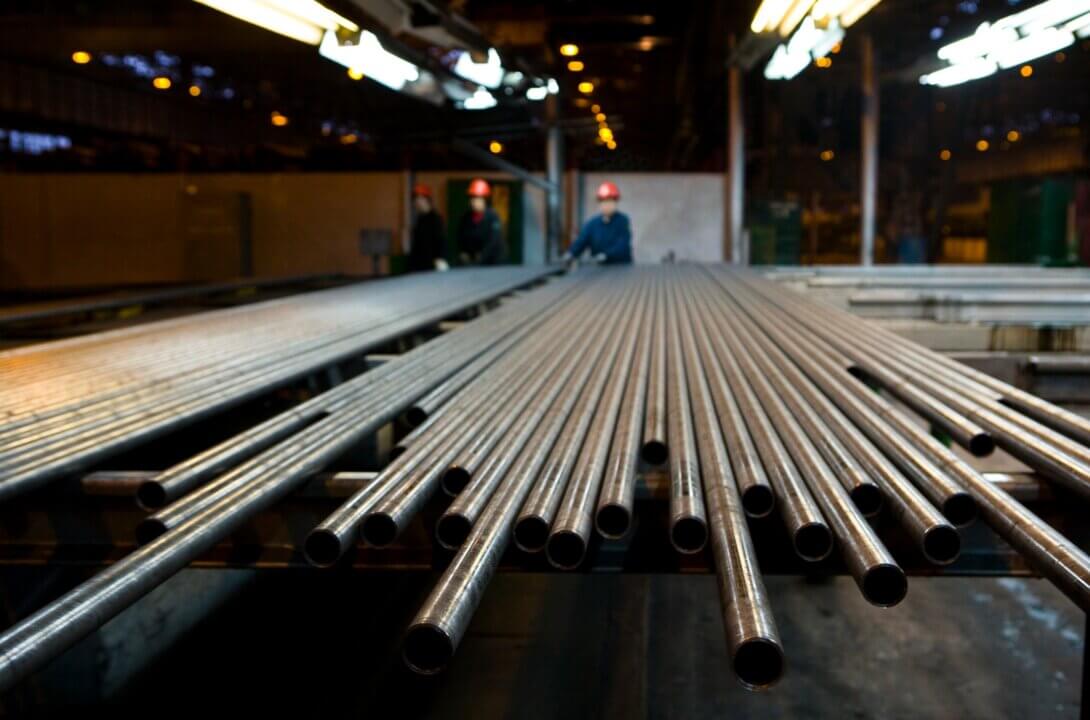
Carbon steel pipes are widely used in various industrial sectors, including construction. The main reason for their adoption in any special or everyday project is their low cost and high quality. However, they have several other advantages.
They can be manufactured in different shapes, such as round, square, rectangular and other cross sections, and are available in different thicknesses and diameters.
In this article, we'll explore the characteristics of carbon steel pipes, their advantages over other materials, and their main applications in the civil industry. Read on!
Carbon steel tubes are cylindrical parts made of steel with a relatively high carbon content, typically above 0.2%. They are present in our daily lives, such as gym equipment, stair railings, and hospital equipment.
They're also widely used in many industries, including oil and gas, construction, mechanical engineering, and automotive. This is because they guarantee the necessary safety compared to other types of piping.
They're commonly used to transport liquids, gases, and solid materials in high-pressure and high-temperature environments. Furthermore, these pipes are relatively affordable compared to other materials, making them a popular option for industrial applications.
It is worth highlighting two models of carbon steel pipes among the most diverse:
In addition to steel and carbon, other compounds such as silicon, manganese, and phosphorus can be added to the carbon steel pipe formula. However, the amount of carbon is what classifies it as low, medium, or high carbon.
Check the amount of carbon in each classification:
The characteristics of carbon steel pipes vary depending on the manufacturing process:
Carbon steel pipes have many advantages. Below, you'll learn about the main ones!
Carbon steel pipes offer good value for money as they are relatively inexpensive compared to other materials, such as aluminum, copper, stainless steel or iron. This without neglecting quality, which is very important in any project.
Projects using this type of piping require faster and simpler installation operations. This reduces expenses with internal or external labor.
In other words, this material is easier to cast, despite its strength. It can be left in a liquid state and poured into molds without much effort. Therefore, suppliers offer various thicknesses and types of this material.
This alternative requires little maintenance compared to other materials, such as iron, reducing repair costs over time.
THE steel It's a recyclable metal, meaning steel tubes can be recycled and reused multiple times without losing their mechanical properties. Therefore, it's a solution known for being environmentally friendly, as it also prevents the overproduction of new items.
Because they can withstand high pressures and temperatures, they are often used in critical applications where safety is a major concern. One example is the oil and gas industry, which handles hazardous materials.
It's worth mentioning that these shapes can be adapted to create aesthetically pleasing environments. This is why many architects opt for carbon steel tubing to bring a modern touch to their spaces.
Unlike stainless steel versions, carbon steel pipes have unique properties, making them ideal for civil construction. They are highly effective for finishing large structures. They can also serve as guides or frames to ensure high-quality specifications.
Thanks to their resistance and formability, they are suitable for supporting large structures exposed to external influences, such as humidity or soil movement.
In this context, they can be applied to everything from simpler constructions, such as single-story houses, to more complex ones, such as commercial buildings, airports, or football stadiums — constructions that generate major engineering and architectural challenges.
This is all due to the greater precision used in their manufacture, resulting in a smooth, groove-free result. Not to mention that it's lightweight, reducing the final weight of even the most robust buildings.
Carbon steel pipes are ideal for various stages of construction due to their numerous benefits. Simply choose the right suppliers, such as Grupo Aço Cearense, to ensure cost reduction in buildings and quality.
Read other blog content and learn more about the Aço Cearense Group on our website!